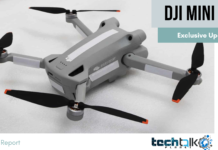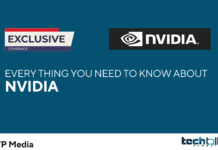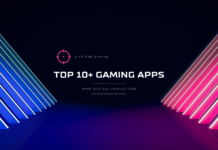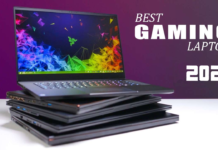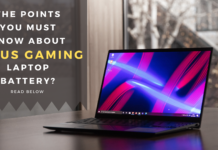Introduction to Nvidia
Nvidia Corporation is a Delaware-based international technology business situated in Santa Clara, California. It’s a software and fabless firm that makes graphics processing units (GPUs), application programming interfaces (APIs) for data science and high-performance computing, and system on a chip (SoCs) for the mobile computing and automotive markets. Nvidia has grown its influence in the gaming sector with its portable game consoles Shield Portable, Shield Tablet, and Shield Android TV, as well as its cloud gaming service GeForce Now. Its professional GPUs are used in workstations for applications in architecture, engineering, and construction, media and entertainment, automotive, scientific research, and manufacturing design, among others.
Nvidia also offers a CUDA API for creating massively parallel programmes that use GPUs.They’re used in supercomputers all around the world.
It has lately entered the mobile computer business, producing Tegra mobile processors for smartphones and tablets, as well as automotive navigation and entertainment systems.
Nvidia announced intentions to buy Arm Ltd. from SoftBank for US$40 billion in stock and cash on September 13, 2020, pending regulatory clearance, which would be the biggest semiconductor purchase to date. SoftBank Group will purchase a bit less than 10% interest in Nvidia, with Arm’s headquarters remaining in Cambridge.
Faced with rising regulatory barriers, Nvidia announced on February 7, 2022 that it was canceling its acquisition of Arm. At the time of Arm’s failure, the deal, which would have become the biggest in the semiconductor industry’s history, was valued at $66 billion.
Nvidia’s founders felt that a specialized GPU would be required to develop computer graphics. Computer games were once solely CPU-based. However, game technology was improving, and MS-DOS was gradually giving way to Windows. Graphics, particularly 3D graphics, required a lot of floating-point math work, and the CPU’s math coprocessor couldn’t keep up.
Nvidia has moved into high-performance computing (HPC) and artificial intelligence since establishing itself as the leading graphics chip vendor for gaming (AI). The same game processors are utilized, but they’ve been repurposed for the various computing duties.
The corporation is expected to generate $26.9 billion in sales in 2022.
Nvidia’s Origins
1993 – NVIDIA FOUNDED BY JENSEN HUANG,CHRIS MALACHOWSKY, AND CURTIS PRIEM
Jensen Huang, Chris Malachowsky, and Curtis Priem started NVIDIA with the notion that the PC will one day become a consumer device for enjoying gaming and entertainment. There were over two dozen graphics chip vendors at the time, a figure that would rise to 70 three years later. By 2006, NVIDIA was the sole remaining independent company.
1994 – SGS-THOMPSON FORGES FIRST STRATEGIC PARTNERSHIP
NVIDIA signed its first strategic cooperation with SGS-Thomson Microelectronics to produce its single-chip graphical user interface accelerator. The chips will be installed in multimedia accelerator boards by Diamond Multimedia Systems.
1995 – THE NV1 IS NVIDIA’S FIRST PRODUCT.
Virtual Fighter is the first 3D game to operate on NVIDIA graphics, according to Sega, the leader in arcade games.
1996 – FIRST DIRECTX DRIVERS FROM MICROSOFT
NVIDIA has released its first Microsoft DirectX drivers that include Direct3D compatibility, a performance-oriented API for rendering 3D graphics.
1997- IN THE FIRST FOUR MONTHS, RIVA LAUNCHED WITH 1 MILLION UNITS.
RIVA 128, the world’s first 128-bit 3D processor, is introduced by the firm. Within the first four months, it has received OEM approval and has supplied over one million devices.
1998 – TSMC SIGNS A PARTNERSHIP
Taiwan Semiconductor Manufacturing Company begins to help in the manufacturing of NVIDIA devices after forming a multi-year strategic collaboration.
1999 – THE GPU WAS CREATED BY NVIDIA.
NVIDIA invents the graphics processing unit, reshaping the industry in the process. The GeForce 256 is introduced as the world’s first GPU, which is defined by NVIDIA as “a single-chip processor with integrated transform, lighting, triangle setup/clipping, and rendering engines capable of processing a minimum of 10 million polygons per second.” GPUs now handle over 7 billion polygons per second.
2000 – NVIDIA BUYS 3DFX GRAPHICS PIONEER
NVIDIA is chosen by Microsoft to offer graphics processors for its first Xbox gaming system.
The assets of 3dfx, a pioneer in graphics technology, are acquired by NVIDIA.
The world’s first laptop GPU, the GeForce2 Go, is released.
2001 – NVIDIA NFORCE ENTERS THE INTEGRATED GRAPHICS MARKET
NVIDIA joins the integrated graphics market with the nForce platform.
2002 – NVIDIA NAMED THE FASTEST-GROWING COMPANY IN AMERICA
The 100 millionth processor is shipped by the corporation.
2003 – MEDIA Q IS ACQUIRED BY NVIDIA.
NVIDIA has been named Entrepreneurial Company of the Year by the Stanford Business School Alumni Association, joining prior honorees eBay, Charles Schwab & Co., and Cisco Systems.
2004 – SLI RELEASES, MAXIMIZING THE GRAPHICS POWER OF A SINGLE COMPUTER.
World of Warcraft released in 3D graphics thanks to a collaboration between NVIDIA and Blizzard Entertainment. The massively multiplayer online game went on to become the most popular in the world.
2005 – NVIDIA WORKS ON A PROCESSOR FOR THE SONY PLAYSTATION 3.
NVIDIA reveals that it is working on a CPU for Sony’s PlayStation 3 game machine.
2006 – UNVEILED CUDA ARCHITECTURE
The 500 millionth graphics processor is delivered by NVIDIA.
NVIDIA introduces CUDA, a ground-breaking architecture for GPU computing. CUDA will allow scientists and researchers to take advantage of GPUs’ parallel processing capabilities to solve their most difficult computing problems.
2007 – NVIDIA IS NAMED COMPANY OF THE YEAR BY FORBES.
The corporation earned $1 billion in revenue in its first quarter.
2008 – LAUNCH OF THE TEGRA MOBILE PROCESSOR
NVIDIA introduces the Tegra mobile CPU, which uses 30 percent less power than a standard PC laptop while delivering incredible performance.
2009 – AT THE INAUGURAL GPU TECHNOLOGY CONFERENCE, THE FERMI ARCHITECTURE WAS RELEASED.
NVIDIA collaborates with Google to bring Android to Tegra CPUs.
2010 – NVIDIA POWERS THE FASTEST SUPERCOMPUTER IN THE WORLD
The world’s fastest supercomputer, China’s Tianhe-1A, is powered by NVIDIA Tesla GPUs.
NVIDIA GPUs are used in all of the Academy Award contenders for “Best Visual Effects,” including Avatar and Star Trek.
2011 – NVIDIA HAS SHIPPED THE ONE BILLIONTH PROCESSOR
NVIDIA introduces Tegra 2, the world’s first dual-core mobile CPU, which will power the first Android tablets.
2012 – NVIDIA RELEASES GPUS WITH THE KEPLER ARCHITECTURE
Titan, the world’s most powerful supercomputer, is powered by NVIDIA Tesla GPUs based on the Kepler architecture.
Tegra 3-based tablets and smartphones have been released.
NVIDIA is the sixth-greenest firm in America, according to Newsweek.
2013 – INTRODUCTION TO THE TEGRA 4 FAMILY OF MOBILE PROCESSORS
Tegra Note, a full-featured tablet with breakthrough pen and camera capabilities, is now available in stores.
Tegra 4i, NVIDIA’s first fully integrated 4G LTE mobile processor, and Tegra 4, the world’s fastest quad-core mobile CPU, are introduced.
2014 – WITH THE RELEASE OF THE TEGRA K1, SHIELD TABLET, ANDROID GAMING REACHES AN INFLECTION POINT.
The Tegra K1 is a 192-core super processor from NVIDIA that transfers the DNA of the world’s fastest GPU to mobile devices.
The SHIELD tablet, the world’s most sophisticated tablet designed for gamers, has arrived on the market to acclaim.
2015 – NVIDIA DRIVES INTO DEEP LEARNING WITH THE LAUNCH OF THE TEGRA X1.
NVIDIA DRIVE opens the door for driverless vehicles by allowing highly advanced driver support systems.
The NVIDIA GeForce GTX TITAN X is the most powerful processor yet designed for deep neural network training.
2016 – PASCAL, DGX-1, AND DRIVE PX 2 ARE POWERING THE AI REVOLUTION AT NVIDIA.
The world’s first deep-learning supercomputer in a box, the NVIDIA® DGX-1TM, boosts artificial intelligence applications.
NVIDIA DRIVETM PX 2 delivers sophisticated in-vehicle artificial intelligence, paving the way for autonomous vehicles in the automotive sector.
2017 – NVIDIA DEVELOPS GPU DEEP LEARNING FOR MODERN AI, VOLTA
The DGXTM line of AI supercomputers is powered by NVIDIA Tesla V100 GPU accelerators, which are based on the NVIDIA Volta GPU architecture.
2018 – NVIDIA TURNS ARCHITECTURE TO REINVENT COMPUTER GRAPHICS
The world’s first GPUs capable of real-time ray tracing, long considered the holy grail of computer graphics, are powered by the NVIDIA® TuringTM GPU architecture.
2019 – NVIDIA REVEALS ADVANCES
MARKETS FOR HPC, EMBEDDED DATA CENTERS, AUTONOMOUS VEHICLES, AND PRO GRAPHICS
NVIDIA Studio is a platform designed to substantially enhance speed and dependability for the 40 million online and studio-based creatives across the world.
2020 – NVIDIA FINISHES MELLANOX ACQUISITION AND RELEASES NVIDIA AMPERE GPU ARCHITECTURE
The NVIDIA® Ampere GPU architecture is unveiled, allowing for the creation of a new class of powerful and adaptable data centers.
When Nvidia joined the market in the early 1990s, it was a crowded place. ATI Technologies, Matrox, Chips & Technology, S3 Graphics, and 3Dfx were among the competitors. With the advent of the GeForce card in 1999, Nvidia surpassed its competitors. Other manufacturers’ 3D graphics and lighting approaches were inferior to its.
Nvidia aimed to increase the usage of its GPU technology as the GPU industry solidified around Nvidia and ATI, which was bought by AMD in 2006. In 2006, the firm created CUDA, a programming language for GPUs that is comparable to C++.
CUDA allows programmers to directly program to the GPU rather than utilizing 3D graphics libraries. This enabled them to construct vast parallel programmes to run high-performance floating-point operations like simulations, visualizations, and other applications that require large volumes of data to be handled in parallel.
Nvidia made a strong effort after developing CUDA in 2006 to get the programming language taught in colleges. More than 200 colleges across the world offer CUDA courses. This has aided in the development of an Nvidia programming workforce.
Nvidia’s Tegra range of systems-on-a-chip (SoC) debuted in 2008, combining an Arm CPU with a scaled-down Nvidia GPU. Tegra was primarily supplied to automobile manufacturers for use in in-dash systems. Nintendo, on the other hand, chose the Tegra for their portable Switch platform in 2017.
Nvidia has spent the most of its years acquiring tiny businesses. However, in 2019, the business paid $7 billion for networking specialist Mellanox Technologies, which had been believed to be an Intel takeover target. Data processing units (DPUs), which are chips utilized in SmartNICs, are Mellanox’s specialty. SmartNICs route data more intelligently than a traditional networking chip or CPU. The goal is to take over networking data processing while the CPU continues to do its core function of data processing. Nvidia’s GPU processors benefit from clever data processing and routing since HPC and AI necessitate the transfer of enormous data volumes.
Nvidia sought to purchase CPU creator Arm Holdings for $40 billion in 2020. The transaction was met with instant resistance in Arm’s home country, with accusations that Nvidia will favor Arm licensing. Despite emphatic denials, Nvidia was unable to overcome the objections and, after 18 months of work, dropped the agreement.
Crypto miners discovered that GPUs were exceptionally effective in mining cryptocurrency, such as Bitcoin, in 2016, posing a threat to both Nvidia and AMD. Large systems were developed, using the whole supply of Nvidia and AMD GPU cards. This resulted in a GPU card scarcity, which was exacerbated when COVID-19 produced shortages and supply difficulties.
Acquisitions and releases
The RIVA TNT, released in 1998, cemented Nvidia’s reputation as a strong graphics adaptor. Nvidia introduced on-board transformation and lighting (T&L) to consumer-level 3D hardware with the GeForce 256 (NV10) in 1999. 120 MHz, four-pixel pipelines, sophisticated video acceleration, motion correction, and hardware sub-picture alpha blending. The GeForce easily outperforms competitors.
Due to the popularity of its products, Nvidia was awarded a $200 million contract to build graphics hardware for Microsoft’s Xbox gaming system. But it diverted many of its top engineers from other projects. The GeForce2 GTS shipped in summer 2000 anyway. In December 2000, Nvidia acquired 3dfx’s intellectual property, a pioneer in consumer 3D graphics technology from the mid-1990s until 2000. In April 2002, the transaction was completed.
The price of Exluna was unannounced in July 2002. Exluna’s software-rendering technologies were incorporated into Cg. Nvidia bought MediaQ for $70 million in August 2003. Nvidia acquired iReady, a high speed TCP/IP and iSCSI offload provider, on April 22, 2004. Nvidia will help Sony create the PlayStation 3’s graphics processor (RSX). Nvidia bought ULI Electronics on December 14, 2005, a supplier of third-party southbridge components for ATI chipsets. Nvidia bought HybridGraphics in March 2006. In December 2006, the U.S. Department of Justice subpoenaed Nvidia and its rival AMD (who had bought ATI) for suspected antitrust breaches in the graphics card sector.
Forbes selected Nvidia Company of the Year for 2007, highlighting its 2007 and 5-year achievements. Nvidia acquired PortalPlayer on January 5, 2007. Nvidia bought Ageia, creator of the PhysX physics engine, in February 2008. Nvidia disclosed plans to use PhysX technology in future GPUs.
In July 2008, Nvidia reported that certain mobile chipsets and GPUs had “abnormal failure rates” owing to production issues. Nvidia didn’t say which products were affected. Nvidia was sued over defective GPUs in Apple, Dell, and HP laptops in September 2008. Nvidia agreed to refund owners of impacted laptops for repairs or replacement in September 2010. Nvidia and Intel struck a $1.5 billion cross-licensing agreement on January 10, 2011, terminating all litigation.
Nvidia’s Tegra 3 ARM SoC for mobile devices was introduced in November 2011 after being shown at Mobile World Congress. The processor is Nvidia’s first quad-core mobile CPU. Nvidia bought UK baseband chip maker Icera for $367 million in May 2011. Nvidia revealed the Tegra 4 in January 2013, along with the Nvidia Shield, an Android-based mobile gaming console. Nvidia purchased STMicroelectronics’ PGI on July 29, 2013.
Nvidia has focused on gaming, automotive electronics, and mobile devices since 2014.
Nvidia released the GTX 1080 and 1070, its first Pascal-based GPUs, on May 6, 2016. Both versions employ GDDR5X and GDDR5 memory and 16 nm fabrication, according to Nvidia. The architecture allows simultaneous multi-projection (SMP), which improves multi-monitor and VR rendering. Nvidia’s “Max-Q” design specification requires laptops with these GPUs to be under 0.8 inches (20 mm) thin.
In July 2016, Nvidia settled a false advertising case involving their GTX 970 model, which couldn’t utilize all of its promised 4 GB of RAM owing to hardware restrictions. Toyota will employ Nvidia’s Drive PX-series AI technology for developing driverless vehicles. Nvidia and Baidu announced a broad AI alliance that encompasses cloud computing, autonomous driving, consumer products, and Baidu’s open-source AI platform PaddlePaddle. Baidu’s autonomous-vehicle platform will use Nvidia’s Drive PX 2 AI.
On December 7, 2017, Nvidia unveiled Titan V.
Nvidia Quadro GV100 was released March 27, 2018. On September 27, 2018, Nvidia launched the RTX 2080 GPUs. Google revealed in 2018 that Nvidia’s Tesla P4 graphic GPUs will be used in Google Cloud AI.
On the Nvidia user forum in May 2018, a topic asked the firm when it will issue web drivers for its GPUs installed on legacy Mac Pro computers up to mid-2012 5,1 running macOS Mojave 10.14. Web drivers provide GPU graphics acceleration and numerous display monitors. Apple’s Mojave update page said macOS Mojave will function on older devices with ‘Metal compliant’ GPUs, including some from Nvidia. This list omitted Metal compliant GPUs that run with macOS High Sierra with Nvidia web drivers. In September, Nvidia answered “Mac OS drivers are totally controlled by Apple. Our engineers are ready to assist Apple and offer fantastic drivers for Mac OS 10.14 if Apple allows (Mojave). In October, Nvidia announced another product “Mac OS drivers are totally controlled by Apple. Unfortunately, Nvidia can’t issue a driver without Apple’s approval, implying a schism between the two businesses. When the enabling web drivers were still nowhere to be found in 2019, Apple Insider chimed in, claiming Apple management “doesn’t want Nvidia support in macOS.” The following month, Apple Insider said Nvidia support was dropped due to “relationship problems” and that Apple was developing its own GPU technology. As a result, Apple consumers must replace their Nvidia cards with a supported brand like AMD Radeon from Apple’s list.
On March 11, 2019, Nvidia announced a $6.9 billion deal to purchase Mellanox Technologies, a major player in the high-performance computing sector. Nvidia released RTX Studio laptops in May 2019. The new laptop will be seven times quicker than a top-end MacBook Pro with a Core i9 and AMD’s Radeon Pro Vega 20 graphics, according to the developers. Nvidia unveiled Minecraft RTX in August 2019, a patch for Windows 10 that adds real-time DXR raytracing. The game is “refitted” with path tracing, which changes how light, reflections, and shadows operate inside the engine.
Nvidia’s best scientists created an open-source ventilator in May 2020 to alleviate the coronavirus pandemic scarcity. Nvidia unveiled Ampere and A100 on May 14, 2020. Nvidia was reportedly in discussions with SoftBank to purchase Arm for $32 billion in July 2020.
Nvidia introduced the GeForce 30 series based on Ampere on September 1, 2020.
SoftBank Group stated on September 13, 2020 that Nvidia will purchase Arm Holdings for $40 billion, with the latter keeping a 10% stake in Nvidia.
Nvidia plans to create the world’s most powerful computer in Cambridge, England. Cambridge-1 will use AI to help healthcare research by 2020, at a cost of £40 million. Jensen Huang said the Cambridge-1 supercomputer will serve as a focus of innovation for the UK and advance healthcare and drug development research.
Nvidia also stated in October 2020 that it will retire its workstation GPU brand Quadro, renaming future devices Nvidia RTX and building them using Nvidia Ampere architecture.
In August 2021, the UK’s Competition and Markets Authority halted Arm Holdings’ merger due to “serious competition concerns.” The acquisition was investigated by the European Commission in October 2021. The Commission said NVIDIA’s purchase might hinder rivals’ access to Arm’s products and provide NVIDIA too much inside knowledge on its competitors due to their Arm arrangements. SoftBank (Arm’s parent company) and Nvidia “decided not to move further with the purchase ‘because of considerable regulatory obstacles'” The probe ends March 15, 2022. Nvidia was hacked that month. The attack coincided with Russia’s 2022 invasion of Ukraine, but there’s no evidence it originated from Russia or Russian hackers.
In March 2022, Nvidia CEO Jensen Huang said they’re open to Intel manufacturing their processors.
This was the first mention of working with Intel’s planned Foundry Services.
Nvidia plans to construct a research facility in Armenia in April 2022.
Business Segments at Nvidia
Beginning in the first quarter of fiscal year 2021, Nvidia altered the way it discloses its operational segments. Graphics and computing, as well as networking, are currently the company’s two primary reportable businesses. Nvidia also has a third area for costs that aren’t covered by the other two categories. For these segments, there are five revenue and operating income breakdowns. Note that the consolidated operating income used to produce the data in the pie charts above and below does not include the operating loss recorded in Q3 FY 2022 for all other categories. The business formerly offered a revenue breakdown for a GPU division and a Tegra processor section.
Graphics
The GeForce GPUs for games and PCs, the GeForce NOW game-streaming service and accompanying infrastructure, and solutions for gaming platforms are all part of Nvidia’s graphics business. Quadro/NVIDIA RTX GPUs for enterprise design, GRID software for cloud-based visual and virtual computing, and car platforms for infotainment systems are also included. 7
The graphics business accounted for $4.1 billion, or nearly 58 percent, of Nvidia’s total revenue in Q3 FY 2022. In comparison to the previous quarter, this was up 46.8%. Operating income increased 60.6 percent year over year to $2.2 billion, accounting for nearly 62 percent of total revenue.
Networking and computing
Nvidia’s Data Center platforms, as well as AI, high-performance computing, and accelerated computing systems, are included in the computation and networking sector. It also comprises automotive AI Cockpit, autonomous driving development partnerships, autonomous vehicle solutions, bitcoin mining CPUs, and Jetson for robots and other embedded platforms. 7
In Q3 FY 2022, sales from the computing and networking division was $3.0 billion, up 55.3 percent from the previous quarter. About 42% of Nvidia’s overall income comes from this category. Operating income increased by 80.5 percent to $1.3 billion year over year. About 38% of the company’s overall operating income comes from computers and networking.
More:
As previously stated, costs not included in the other two divisions are included in the all other category. Stock-based remuneration, corporate infrastructure and support costs, acquisition-related costs, IP-related expenditures, and other non-recurring charges and benefits considered to be enterprise in nature are examples of such expenses. 7 In Q3 FY 2022, these costs resulted in an operating loss of $821 million for the category, up 19.9% from the previous quarter’s operating loss. During the quarter, no income was generated in any other category.



